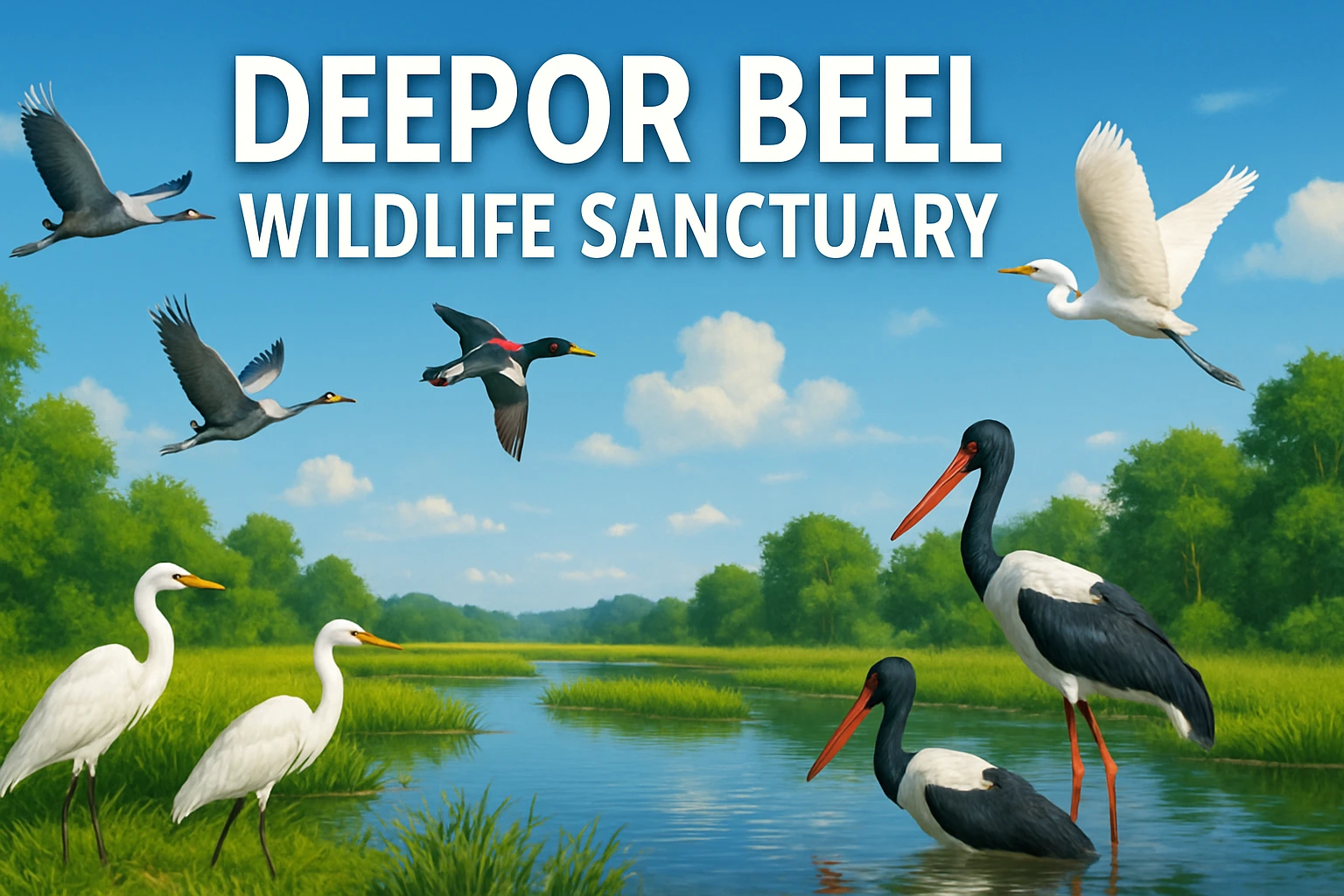Dipor Bil A Tranquil Oasis in Assam
Deepor Beel Wildlife Sanctuary is one of the most remarkable wetland ecosystems located near Guwahati in Assam, India. Known for its rich biodiversity, especially birdlife, it serves as a critical habitat for many migratory and resident species. This sanctuary offers an incredible opportunity for eco-tourism, birdwatching, and experiencing the tranquility of nature just a short distance from a bustling urban center. This article provides an in-depth overview of Deepor Beel Wildlife Sanctuary, including its ecological importance, tourist attractions, how to reach, conservation efforts, and frequently asked questions.
Ecological Importance:
Deepor Beel is a freshwater oxbow lake formed from a former channel of the Brahmaputra river. It covers an area of approximately 4,000 hectares, with the protected sanctuary zone covering around 414 hectares. The sanctuary was declared a protected bird sanctuary in 1989 and is recognized as one of India’s Ramsar sites for wetlands of international importance.
Biodiversity
The sanctuary is home to over 219 species of birds, including rare and endangered migratory birds such as the Siberian crane, Greater adjutant stork, and Baer’s pochard. Birdwatchers can spot an impressive variety of waterfowl in the winter months, with up to 18,000 birds arriving annually.
Apart from birds, Deepor Beel supports other wildlife including Asian elephants, leopards, wild boars, jungle cats, barking deer, and various reptiles and amphibians. The wetland also sustains a rich variety of aquatic life including over 50 species of fish.
Tourism and Activities
Deepor Beel offers a peaceful and scenic environment attracting nature enthusiasts, birdwatchers, photographers, and researchers alike. Some key tourism highlights are:
- Birdwatching from observation towers during October to March.
- Boat rides on the lake to explore the rich flora and fauna.
- Guided eco-tours and nature walks.
- Photography and wildlife spotting.
- Educational tours for students and researchers.
Also read: Maharaja Prithu: The Legendary Warrior King of Assam Who Defeated Bakhtiyar Khilji
How to Reach Deepor Beel
- By Air: The nearest airport is Lokpriya Gopinath Bordoloi International Airport in Guwahati, located approximately 25 km away.
- By Rail: Guwahati Railway Station is the nearest major railway hub, approximately 20 km from the sanctuary.
- By Road: Deepor Beel is well connected to Guwahati city by road, with regular taxis and local buses available. It takes about 45 minutes to 1 hour by car from the city center depending on traffic conditions.
Best Time to Visit
The sanctuary is best visited between October and March when migratory birds flock the wetlands. The cooler weather also makes exploring the sanctuary more enjoyable.
Conservation Efforts
Deepor Beel plays a vital role in local ecology and flood control. However, it faces threats from encroachment, pollution, and habitat degradation. Conservation initiatives include:
- Designation as an Eco-Sensitive Zone to regulate harmful activities.
- Community engagement and awareness programs.
- Habitat restoration and monitoring.
- Controlled tourism to minimize disturbance.
FAQs about Deepor Beel Wildlife Sanctuary
Q1: What makes Deepor Beel ecologically important?
A1: It is a Ramsar wetland supporting exceptional biodiversity, especially migratory bird species, and acts as a flood basin for Guwahati.
Q2: Are there facilities for tourists within the sanctuary?
A2: Yes, observation towers, boat rides, and guided tours are available. Basic amenities are provided to support eco-tourism.
Q3: Is Deepor Beel open year-round?
A3: Yes, but the best time to visit is from October to March for birdwatching and pleasant weather.
Q4: Can visitors take boats inside the sanctuary?
A4: Yes, regulated boat rides are offered for birdwatching and nature viewing.
Q5: Are there any endangered species in Deepor Beel?
A5: Yes, several migratory birds such as the Greater adjutant stork and Baer’s pochard are endangered and protected here.
Multiple Choice Questions (MCQs)
- Deepor Beel is primarily known as a:
a) Mountain range
b) Wetland and bird sanctuary
c) Desert area
d) National park - Which river is associated with the formation of Deepor Beel?
a) Ganges
b) Brahmaputra
c) Yamuna
d) Godavari - Deepor Beel was declared a Ramsar site in which year?
a) 1989
b) 1995
c) 2002
d) 2010 - What is the best time to visit Deepor Beel for birdwatching?
a) April to June
b) July to September
c) October to March
d) Year-round - Which endangered bird can be seen at Deepor Beel?
a) Peacock
b) Greater adjutant stork
c) Sparrow
d) Crow
Answers summary:
1 – b
2 – b
3 – c
4 – c
5 – b
Dipor Bil: Summary
Deepor Beel Wildlife Sanctuary is a critical ecological gem in Assam, offering unmatched biodiversity, especially among migratory birds. It is easily accessible from Guwahati and provides serene experiences for tourists, nature lovers, and researchers. Despite challenges, concerted conservation efforts aim to protect this unique wetland. Visitors from across the globe come here to witness spectacular birdlife, making it a valuable destination for eco-tourism in India.

